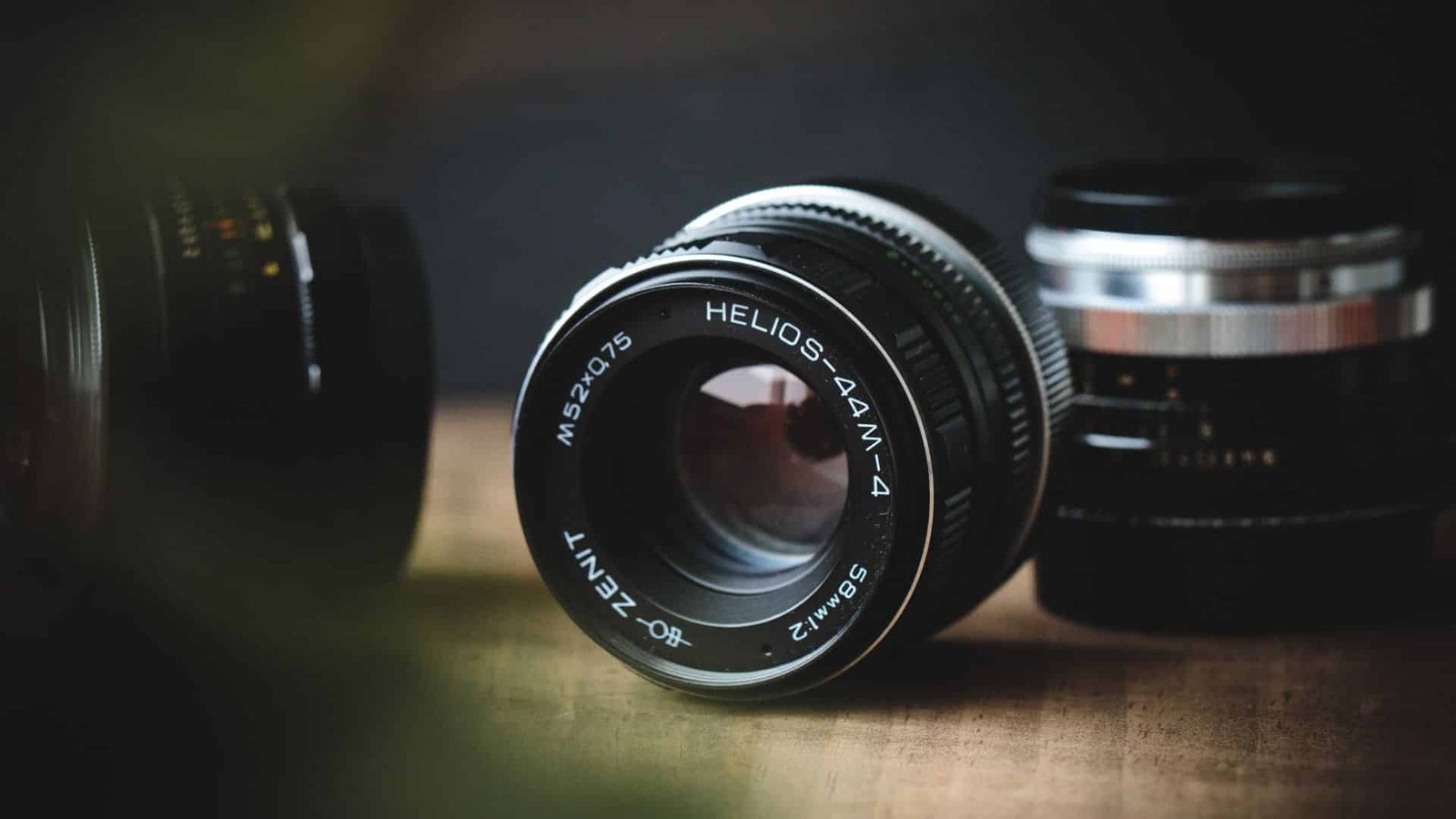Camera lenses are an essential component of photography, playing a crucial role in determining image quality, perspective, and creative possibilities. However, when shopping for lenses, many photographers encounter a common question: are camera lenses universal? In other words, can any lens fit and function properly on any camera? The answer lies in the compatibility factors that vary between camera brands, models, and lens types. Camera systems often have unique mounts, specifications, and electronic connections, making some lenses incompatible with certain cameras without adapters. Additionally, aspects like autofocus functionality, aperture control, and image stabilization may differ. Understanding lens compatibility is vital for photographers seeking to expand their gear or switch camera systems. This post will explore the technical details of Are camera lenses universal? the role of camera mounts, and how adapters can bridge compatibility gaps. Whether you’re a beginner or a seasoned photographer, this guide will clarify how lenses and cameras work together.
What is a Camera Lens?
A camera lens is a fundamental component of any camera, acting like the eye that captures the visual world. It is a piece of optical glass or multiple glass elements that are designed to gather and focus light onto the camera’s image sensor or film. In simpler terms, the lens is responsible for forming a sharp and clear image of the scene you want to capture.
Here’s a breakdown of the basic functions of a camera lens:
1. Light Gathering:
The primary function of a lens is to collect and concentrate light from the scene. This is crucial for creating a well-exposed image.
2. Focusing:
The lens allows you to focus on specific subjects or elements within the frame. By adjusting the focus, you can ensure that the image is sharp and clear.
3. Image Magnification:
Lenses have different focal lengths, influencing the magnification of the captured image. A shorter focal length (wide-angle lens) captures a broader view, while a longer focal length (telephoto lens) brings distant subjects closer.
4. Depth of Field Control:
The aperture in a lens controls the amount of light entering the camera and, along with the focal length, influences the depth of field. A wide aperture (small f-number) results in a shallow depth of field, emphasizing the subject while blurring the background.
5. Lens Elements and Coatings:
Modern camera lenses often consist of multiple glass elements, each serving a specific purpose like reducing aberrations and improving image quality. Lens coatings are also applied to minimize reflections and enhance contrast.
Types of Camera Lenses: A Quick Overview
Photography is an art that relies heavily on the choice of lenses. Each type of lens serves a specific purpose, allowing photographers to capture diverse scenes and subjects. Here’s a quick overview of the main types of camera lenses:
1: Prime Lenses: These have a fixed focal length, offering sharp image quality, wide apertures for low-light conditions, and beautiful background blur (bokeh). They’re ideal for portraits, street photography, and creative work.
2: Zoom Lenses: Featuring variable focal lengths, zoom lenses offer flexibility by covering a range of perspectives, from wide-angle to telephoto. They are perfect for events, travel, and wildlife photography.
3: Wide-Angle Lenses: These lenses capture a broad field of view, making them ideal for landscapes, architecture, and group shots. They emphasize depth and spatial relationships.
4: Telephoto Lenses: With long focal lengths, telephoto lenses bring distant subjects closer. They are widely used for sports, wildlife, and portrait photography.
5: Macro Lenses: Macro lenses are designed for extreme close-ups, capturing intricate details of small subjects like flowers, insects, or textures.
6: Fisheye Lenses: These ultra-wide-angle lenses produce a distorted, spherical effect, creating a unique, artistic perspective.
7: Standard Lenses: Often around 50mm, these lenses mimic the human eye’s natural field of view, making them versatile for everyday photography.
8: Superzoom Lenses: Combining wide-angle and telephoto capabilities, these all-in-one lenses are great for travel and general use, eliminating the need to swap lenses.
9: Specialty Lenses: These include tilt-shift lenses for architectural photography, cine lenses for filmmaking, and infrared lenses for unique visual effects.
Are Camera Lenses Universal Across Brands?
No, camera lenses are not universal across brands. Each camera manufacturer has proprietary lens mounts, preventing the direct interchangeability of lenses between different brands. Compatibility depends on matching the lens mount of the lens with the specific mount of the camera body from the same brand.
Understanding Lens Mounts:
Lens mounts are crucial in the world of photography, determining how lenses connect to camera bodies. Here’s a breakdown of key points to understand about lens mounts:
Definition:
- A lens mount is a mechanical interface that enables a camera lens to attach securely to the camera body.
Brand Specific:
- Each camera manufacturer has its own proprietary lens mount design. For example, Canon, Nikon, and Sony have unique mounts.
Mount Types:
- There are different types of mounts, such as Canon’s EF mount, Nikon’s F mount, and Sony’s E mount. Mirrorless cameras often have a shorter flange distance, influencing the design of their mounts.
Compatibility:
- Lenses are only compatible with cameras that share the same lens mount. Using a lens from a different brand usually requires an adapter, but this may impact certain functionalities.
Flange Distance:
- This is the distance between the lens mount and the camera’s image sensor. It affects the design and compatibility of lenses, especially in mirrorless systems.
Manual vs. Electronic Contacts:
- Modern lens mounts often include electronic contacts for communication between the lens and the camera body. This allows for autofocus, image stabilization, and other electronic features.
Adapters:
- Adapters can be used to connect lenses with different mounts. However, they may not support all functionalities, and autofocus performance might be affected.
Lens Release Mechanism:
- Understanding how a lens attaches and detaches from a camera is essential. Some lenses use a twist-and-lock mechanism, while others have a push-button release.
Future Compatibility:
- Camera manufacturers may introduce new lens mounts with updated technologies. It’s essential
Can I Use Third-Party Lenses on My Camera?
Yes, in many cases, you can use third-party lenses on your camera. Several manufacturers, such as Sigma, Tamron, and Tokina, produce lenses compatible with major camera brands like Canon, Nikon, and Sony. However, when exploring whether Are camera lenses universal? it’s crucial to consider the following:
1. Compatibility: Ensure that the third-party lens is designed for your specific camera mount. Check for compatibility with your camera brand and model.
2. Features and Performance: While third-party lenses can offer cost savings, be aware that some features, like autofocus speed and image stabilization, may vary compared to the camera manufacturer’s native lenses.
3. Reviews and Recommendations: Before purchasing, read reviews and seek recommendations from photographers who have used the specific third-party lens. This can provide valuable insights into its performance and reliability.
4. Warranty and Support: Consider the warranty and customer support provided by the third-party manufacturer. Reliable support can be essential in case of issues or concerns.
5. Firmware Updates: Some camera manufacturers release firmware updates that can impact the compatibility of third-party lenses. Stay informed about updates to ensure continued functionality.
Crop Factor and Full-Frame Sensors:
Understanding crop factors is essential for photographers, especially when transitioning between different sensor sizes. Here’s a brief overview:
- Crop Factor Defined:
- The crop factor is a numerical value that represents the difference in size between a camera’s image sensor and a full-frame sensor.
- Full-frame sensors, equivalent to the size of a 35mm film frame, are the standard reference.
- Calculation:
- The crop factor is determined by dividing the diagonal length of a full-frame sensor by the diagonal length of the camera’s sensor in question.
- For example, a crop factor of 1.5x means the camera’s sensor is 1.5 times smaller than a full-frame sensor.
- Effect on Focal Length:
- The crop factor affects the effective focal length of a lens on a camera with a smaller sensor.
- Multiply the lens’s focal length by the crop factor to get the equivalent focal length on a full-frame camera.
- Example: A 50mm lens on a camera with a 1.5x crop factor becomes effectively a 75mm lens (50mm x 1.5).
- Field of View Impact:
- Cameras with smaller sensors have a narrower field of view compared to full-frame cameras when using the same lens.
- This can be advantageous for achieving a “zoomed-in” effect with standard lenses on crop sensor cameras.
- Advantages and Considerations:
- Crop factor cameras are often more compact and lighter, making them suitable for travel and casual photography.
- Understanding crop factors is crucial for photographers who may switch between cameras with different sensor sizes.
- Common Crop Factors:
- Common crop factors include 1.5x (APS-C sensors in Nikon and Sony), 1.6x (APS-C sensors in Canon), and 2x (Micro Four Thirds sensors).
Interchangeable vs. Fixed Lenses:
Choosing between interchangeable (zoom) lenses and fixed (prime) lenses is a fundamental decision for photographers. Here’s a comparison to help you decide which type suits your needs:
Interchangeable (Zoom) Lenses:
- Versatility:
- Pros: Zoom lenses offer a range of focal lengths in a single lens, providing flexibility to compose shots without changing lenses.
- Cons: The versatility comes with some compromises in terms of size, weight, and potentially lower maximum apertures.
- Convenience:
- Pros: Ideal for situations where you need to quickly adjust focal length, such as capturing subjects at varying distances.
- Cons: Bulkier compared to fixed lenses, which may impact portability.
- Adaptability:
- Pros: Suited for a variety of photography genres, from landscapes to wildlife, due to the range of focal lengths.
- Cons: Some zoom lenses may sacrifice image quality or have a narrower maximum aperture.
- Cost-Effectiveness:
- Pros: Generally more cost-effective as one zoom lens can cover multiple focal lengths.
- Cons: Higher-end zoom lenses can still be expensive, and image quality may vary.
Fixed (Prime) Lenses:
- Image Quality:
- Pros: Prime lenses often provide superior image quality, sharper details, and better low-light performance due to wider apertures.
- Cons: Lack of zoom requires physical movement to frame the shot.
- Low Light Performance:
- Pros: Wide apertures (e.g., f/1.4, f/1.8) allow more light, making primes excellent for low-light conditions or achieving a shallow depth of field.
- Cons: Limited to a single focal length, requiring careful composition.
- Portability:
- Pros: Generally smaller, lighter, and more portable compared to zoom lenses, making them ideal for travel and street photography.
- Cons: Lack of zoom might limit framing options in certain scenarios.
- Creative Control:
- Pros: Forces photographers to think creatively, focus on composition, and move physically to find the best angle.
- Cons: Less convenient for quickly adjusting focal lengths, especially in fast-paced situations.
Lens Compatibility Within a Brand:
Lens compatibility within a camera brand is generally assured, but with considerations. Different camera models may have specific requirements, and advancements in technology may introduce new features that only function with certain lenses. It’s essential to confirm compatibility by checking the lens mount and ensuring the lens is designed for your camera’s sensor size. Additionally, firmware updates from the camera manufacturer can influence compatibility. Always consult your camera’s documentation or the manufacturer’s website to verify the compatibility of a specific lens with your camera model.
Conclusion: Are Camera Lenses Universal?
In conclusion, navigating the world of camera lenses involves understanding the intricacies of lens compatibility, mounts, and the diverse types available. While lenses are not universally interchangeable across brands, careful consideration of mounts, sensor sizes, and functionalities allows photographers to make informed choices. Whether opting for versatile zoom lenses or the superior image quality of prime lenses, knowing your equipment ensures you can capture the perfect shot for any scenario. As technology evolves, staying updated on firmware and compatibility remains key in maximizing the potential of your camera and lenses.

